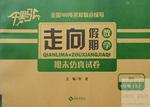题目内容
The solar system has eight planets. The planets are Mercury, Venus, Earth, Mars, Jupiter, Saturn, Uranus, and Neptune. The Planets are all round, like balls. The planets all go around the sun.
Mercury is the closest to the sun. It is very hot on Mercury. The planets that are far away from the sun are very cold. Venus is between Mercury and the Earth. It is sometimes called Earth’s “sister planet” because they have almost the same size and shape. The Earth is the planet where we live. From space, the Earth looks blue because it has so much water. Jupiter is the largest planet in our solar system. Saturn is known for having rings around it. Uranus was the first planet discovered with a telescope. We can see Venus, Mars, Jupiter, and Saturn with our eyes, however, to see Uranus, we need a telescope. Neptune is the 8th planet in our solar system. The planet is farthest from the sun.
Probes (探测仪) go into space and take pictures of the planets. We learn a lot from these pictures. If you could send a probe to any planet, where would you send it?
1.What goes around the sun?
A. Moon. B. Stars. C. Spaceships. D. Planets.
2.Which planet is Earth’s “sister planet”?
A. Mercury. B. Venus. C. Jupiter. D. Saturn.
3.Some planets are far away from the sun so they are very ______.
A. cold B. hot C. small D. bright
4.What does the underlined word “telescope” mean in Chinese?
A. 潜水镜 B. 显微镜 C. 高台 D. 望远镜
5.Which of the following is TRUE?
A. Earth is the second closest planet to the sun.
B. Jupiter is larger than any other planet in our solar system.
C. Uranus is famous for having rings around it.
D. We can’t see Mars with our eyes.
1.D 2.B 3.A 4.D 5.B 【解析】本篇文章难度适中,主要向我们讲述太阳系的一些知识。 1.细节理解题。根据The planets all go around the sun可知,星球绕着太阳转,故选D。 2.细节理解题。根据Venus is between Mercury and the Earth. It is sometimes call... 千里马走向假期期末仿真试卷寒假系列答案
千里马走向假期期末仿真试卷寒假系列答案

 B.
B.  C.
C. 